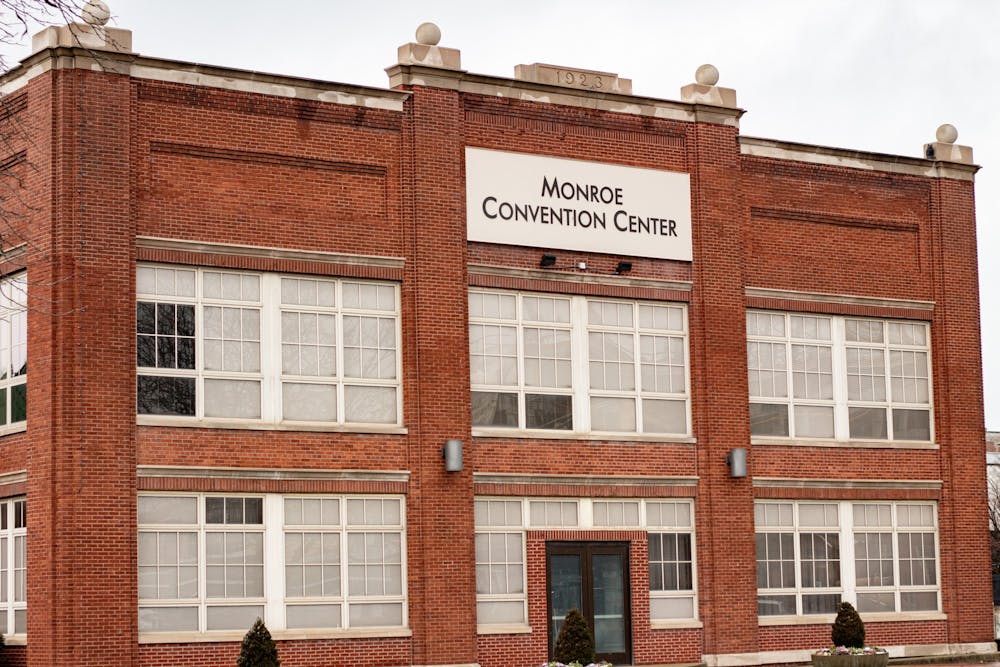Gov. Eric Holcomb announced Jan. 13 that Indiana residents 70 years of age and older are eligible to receive the COVID-19 vaccine. Previously, only those aged 80 and older were allowed to register for the vaccination.
While essential the elderly receive the vaccination early, Indiana’s distribution plan fails to prioritize people with pre-existing conditions or essential workers who may be exposed at their job, such as grocery store employees.
By slowly lowering the age requirement to receive the vaccine, Indiana can ensure more vulnerable populations have access to important preventative medicine. Although we must continue to be diligent about social distancing, this is an essential push to protect some of our most vulnerable communities.
However, Indiana can and should expand eligibility for the vaccine.
[Related: Monroe County expects to distribute vaccines starting Jan. 13]
Indiana has taken the easy way out when it comes to distribution and planning instead of putting the needs of its most vulnerable and exposed communities first. Its distribution plan has hardly been developed, only including a “Phase 1-A” and “Phase 1-B.” The state should work diligently to develop a more comprehensive plan, as other states have.
Currently, Indiana’s COVID-19 dashboard shows every county except one has a weekly positivity rate of 200 or more new cases per 100,000 people. In the past week, nearly 40 Hoosiers died everyday from COVID-19.
Indiana, along with the rest of the country, has done a poor job of containing the spread of COVID-19. The data exemplifies how badly we need to get residents vaccinated quickly in order to save lives.
While the first people able to register for vaccination in December were health care workers, long-term care facility residents and first responders, the next phase of Indiana’s plan is to simply open registration by age.
After vaccine registration is opened to those aged 60 and older — at an undetermined date — Indiana has not yet released who is eligible next.
Indiana is comparable to Tennessee in terms of both population and COVID-19 statistics. Indiana has had a total 592,709 positive cases, while Tennessee has had 587,694 confirmed positive cases. When it comes to deaths from COVID-19 in each state, Indiana has had a total of 8,966 deaths, and Tennessee has had 8,391 deaths.
However, Tennessee is distributing the vaccine more effectively, and they have a long-term plan for doing so. It extends throughout the year, while Indiana has not provided a framework beyond the second part of its first phase.
As of Jan. 15, Tennessee had received 657,550 doses of the COVID-19 vaccine and already given 3.9% of its residents at least one of the two doses they need. Indiana has received 642,425 doses, with only 3.3% of its residents receiving at least one of the two required doses. Although this small margin doesn’t seem like much, for some people, it can be the difference between life and death.
Tennessee’s approach to vaccine distribution is based on pre-existing conditions, occupations and a rolling schedule that lowers the age for eligibility.
State officials have accounted for the various factors that can affect someone's likelihood of contracting COVID-19, as well as how harmful contracting COVID-19 can be for that group. They have methodically devised intentional phases that account for the various factors surrounding the spread and severity of COVID-19.
Tennessee’s distribution plan started with healthcare workers, but it also included dependent disabled adults. Tennessee’s phases then move to K-12 teachers, child care workers and first responders. Tennessee plans to vaccinate all people 16 years and older with high-risk health conditions starting in March.
Indiana on the other hand, is lacking when it comes to this divisive planning.
Both the Pfizer and Moderna vaccine companies are distributing their vaccines in the United States, and they both require two doses to be effective at preventing COVID-19. Although more than 300,000 people have received their first dosage of the vaccine in Indiana, only about 60,000 have received their second dose of the vaccine as of Jan. 18.
As of Jan. 15, Tennessee’s distributed 46% of the doses it’s received. Indiana has only distributed 41%. While not a huge difference, every vaccine potentially saves a life.
By looking at all these statistics and comparisons, it's interesting to see the differing paths that Indiana and Tennessee have taken to get their residents vaccinated. Tennessee is being thorough and diligent about their distribution of the vaccine to better protect its population as a whole, while Indiana’s plan lacks meaningful and tactful decisions.
We now have a way to really protect people from COVID-19. Every life saved is a life that can get the vaccine and is less vulnerable to the disease.
If Indiana takes the time to reform their phases of distribution for the vaccine, it can become more effective and save more Hoosiers’ lives.
Aidan Kramer (she/her) is a freshman studying microbiology. She hopes to pursue a career in medicine after she graduates.






